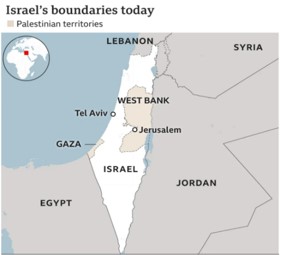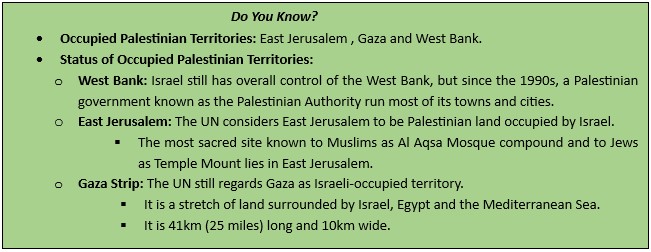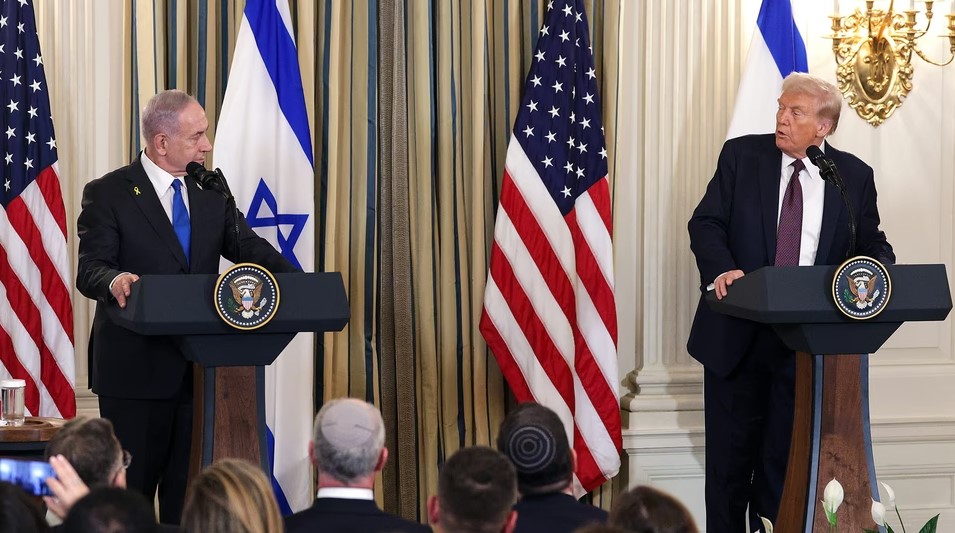Context: Recently US president ordered Israel to immediately stop the bombing of Gaza after Hamas said it had accepted parts of his 20-point plan to end the nearly two-year war.
- Israeli Prime Minister’s office said the country was preparing for “immediate implementation” of the first stage of Trump’s plan, focusing on the release of hostages.

What is 20-point Gaza peace Plan?
Main elements of the plan:
- Hostages release: Within 72 hours of Israel accepting the proposal, all hostages will be returned. Afterward, Israel will also release Palestinian prisoners.
- Amnesty to Hamas member: Once all hostages are freed, Hamas members who wish to leave Gaza will get safe passage.
- The plan envisions a “deradicalized” Gaza that will be redeveloped for its people’s benefit.
- Board of Peace: Gaza will be governed by a temporary transitional governance of a technocratic, apolitical committee of Palestinians and international experts, to be overseen by the Board of Peace.
- Economic development: A special economic zone will be established with preferred tariff and access rates to be negotiated with participating countries.
- Governing of Gaza: Hamas and other factions would agree to have no role whatsoever in governing Gaza, directly or indirectly.
- Role of regional partners: The United States will work with Arab and international partners to develop a temporary International Stabilization Force to immediately deploy in Gaza.
- Palestinian statehood: The Israeli Defense Forces will progressively hand over the Gaza territory it occupies to the International Stabilisation Force.
Timeline of the Israel-Hamas war (2023–2024)
- Oct 7, 2023: Hamas launches surprise attack on Israel, killing more than 1,200 and abducting 250.
- Oct 8, 2023: Hezbollah fires missiles at Israel from Lebanon in support of Gaza.
- October 27, 2023: Israeli ground forces entered Gaza.
- September 29, 2025: Trump unveiled his 20-point peace plan.
Israel and the Palestinians: History of the conflict
- Post World War I: After the defeat of the Ottoman Empire, Britain took control of the region known as Palestine.
- At the time, it was home to an Arab majority, a Jewish minority, and other ethnic groups.
- Balfour Declaration (November 2, 1917): UK pledged to establish a “National Home” in Palestine for Jewish people.
- Between the 1920s and 1940s: Jewish immigration to Palestine increased, especially as many fled European persecutions.
- By 1947, the Jewish population reached over 30% of the total population.
- UN Partition Plan (1947): The UN agreed partitioning Palestine into separate Jewish and Arab states, with Jerusalem under international control.
- Jewish leaders accepted the plan, gaining 56% of the land, but the Arab League rejected it.
- May 14, 1948: Jewish leaders in Palestine declared an independent state known as Israel.
- Israel was recognised by the UN the following year.
- 1948 Arab-Israeli war: Israel was attacked by the armies of five Arab nations.
- Agreements left Egypt occupying the Gaza Strip, Jordan occupying the West Bank and East Jerusalem, and Israel occupying West Jerusalem.
- 1967 Middle East war: Also known as the Six-Day War, the war saw Israel fight Egypt, Syria and Jordan.
- Israel captured the Sinai Peninsula and Gaza from Egypt, most of the Golan Heights from Syria, and East Jerusalem and the West Bank from Jordan.
- 1979: Israel signed a peace treaty with Egypt and returned the Sinai.


